All You Need To Know About Claude 4 Opus: Anthropic’s Most Powerful AI
Anthropic has recently released its latest Claude 4 lineup: Opus, Sonnet, and Haiku. While Sonnet strikes a balance between speed and intelligence, and Haiku is designed for lightweight use, Claude 4 Opus is the top-tier model built for the most demanding AI tasks. If you’re tackling complex codebases, in-depth research, or building multi-step agents, Opus is the model designed to go the distance.
This isn’t your everyday AI model. Claude 4 Opus is the engine behind Anthropic’s most advanced workflows.
Claude 4 Opus at a Glance
- Context window: 200,000 tokens
- Max output: 32,000 tokens
- Pricing: $15 per 1M input tokens / $75 per 1M output tokens
- Release date: March 2025
- Availability: Claude Pro, API (Anthropic), OpenRouter, Fello AI
- Use-case strengths: Deep reasoning, coding, legal analysis, planning, RAG agents, tool use, autonomy
- Knowledge cutoff: March 2025
Why Opus 4 Matters
Claude 4 Opus isn’t built for casual queries. It’s meant for deep work. With the same massive 200,000-token context window as Sonnet, Opus can absorb large datasets, full legal documents, or entire repositories of source code and maintain coherence over long sessions.
Its output capacity may be lower (32,000 tokens vs. Sonnet’s 64,000), but what it trades in quantity, it makes up for in depth of reasoning. Opus is designed to simulate complex thought processes, perform multi-layered analysis, and hold multi-turn conversations without forgetting earlier details.
It’s the most advanced model in Anthropic’s lineup, often compared directly with GPT-4o, Claude Opus is built for users who want more than just fast results—they want accurate, dependable intelligence.
Top-Level Benchmarking
Claude 4 Opus consistently outperforms competitors across industry-standard benchmarks. On SWE-bench Verified, a real-world benchmark that evaluates how well AI can resolve GitHub issues through autonomous reasoning, Opus achieves an impressive 83%+ score. This places it well ahead of Claude Sonnet 4 (72.7%), GPT-4.1 (69.1%), and Gemini 2.5 Pro (63.2%). It’s not just a better score—it’s a whole new tier of capability.
These aren’t just synthetic tests. SWE-bench Verified requires real, functional fixes to software issues. Claude Opus doesn’t just hallucinate solutions—it identifies root causes, proposes actionable fixes, and writes usable code. That’s why developers and engineering teams increasingly rely on Opus for code refactoring, debugging, and test generation at scale.
Beyond SWE-bench, Claude 4 Opus also leads on:
- HELM (Holistic Evaluation of Language Models): Measures truthfulness, robustness, and fairness.
- MMLU (Massive Multitask Language Understanding): Tests general knowledge across 57 subjects.
- Terminal-bench: Simulates extended command-line workflows requiring memory and reasoning over time.
In these benchmarks, Opus routinely ranks #1—not just among open-source models but across all known proprietary systems.
Here’s how it stacks up in a comparison chart:
| Model | SWE-bench Score | Max Context Window | Input Cost | Output Cost |
|---|---|---|---|---|
| Claude Opus 4 | 83%+ | 200,000 tokens | $15 | $75 |
| Claude Sonnet 4 | 72.7% | 200,000 tokens | $3 | $15 |
| GPT-4.1 | 69.1% | 32,000 tokens | $15 | $75 |
| Gemini 2.5 Pro | 63.2% | 1,000,000 tokens | $10 | $30 |
Even though Gemini boasts a larger context window, Opus proves that what matters most is not the size of your input, but the intelligence of your output. Whether it’s maintaining logic across long inputs, resolving real bugs, or generating consistent and accurate summaries—Opus leads with precision and consistency.
This level of performance is why Opus is the preferred choice for users who demand more from their AI: deeper thinking, cleaner code, and better results at every stage of the workflow.
Advanced Capabilities
1. Best-in-Class Reasoning
Claude Opus 4 is ideal for tasks requiring layered logic, such as strategic planning, policy generation, legal analysis, and research synthesis. It can follow abstract instructions, break down complex tasks, and generate creative yet grounded responses.
2. Tool Use & Agent Frameworks
Unlike simpler models, Opus supports tool use integration. It can:
- Call APIs
- Operate file systems
- Use scratchpads or planning buffers
- Work with web browsers and command-line interfaces
This makes it well-suited for agents built on frameworks like LangChain or AutoGen, where models need to pause, assess, and retry actions.
3. Visual Understanding
Like Sonnet, Opus can process image inputs. It can read graphs, dissect UI screenshots, and interpret technical schematics. But Opus tends to reason further about what it sees, linking visual elements to broader concepts or tasks.
4. Secure Document Analysis
Claude Opus can load entire legal contracts, market reports, or PDFs. It can:
- Answer questions about document sections
- Rewrite dense language into summaries
- Compare versions and highlight inconsistencies
This is particularly valuable for lawyers, consultants, or researchers dealing with sensitive content.
Where Opus Excels
Claude 4 Opus is especially effective in complex legal and regulatory work, where attention to detail and contextual understanding are essential. Its capacity to process large documents and apply structured reasoning makes it a powerful tool for lawyers and compliance teams.
It also stands out in strategic business planning, offering clear, data-informed insights and suggestions for long-term growth, risk assessment, and market analysis. This makes it valuable for executives and consultants tackling high-stakes decisions.
In academic and policy research, Opus helps synthesize scholarly literature, draft proposals, and even simulate debate across various perspectives. Researchers benefit from its ability to summarize and interpret information from across disciplines.
For enterprise-level software development, Opus supports tasks like architecture planning, refactoring legacy systems, and maintaining large, multi-file projects. It understands both the micro and macro aspects of coding at scale.
Opus also excels at generating and validating full test suites, making it a reliable assistant for quality assurance and debugging.
Lastly, it’s built to run advanced autonomous agents that interact with tools, reason through steps, and adapt strategies on the fly. This makes it suitable for AI-driven workflows that require not just output—but orchestration of tasks.
Claude Opus 4 vs GPT-4o vs Gemini 2.5
When comparing Claude Opus 4 to other major models, the differences in power, flexibility, and cost become especially clear. While Claude Sonnet 4 is positioned as the efficient and budget-friendly daily driver, Opus 4 targets serious use cases—where deeper reasoning, tool integration, and long-term memory matter more than token throughput alone.
The table below highlights key differentiators between Claude Opus 4 and its peers, including Claude Sonnet 4, GPT-4o, and Gemini 2.5 Pro. These comparisons reflect capabilities such as context window size, output capacity, reasoning strength, and ideal use cases:
| Feature | Claude Opus 4 | Claude Sonnet 4 | GPT-4o | Gemini 2.5 Pro |
|---|---|---|---|---|
| Context Window | 200,000 tokens | 200,000 tokens | 32,768 tokens | Up to 1M (Flash) |
| Max Output | 32,000 tokens | 64,000 tokens | ~4,096 tokens | 32,000+ |
| Agent Integration | Advanced | Moderate | Moderate | Limited |
| Reasoning Power | Best in class | Very strong | Strong | Good |
| Price (in/out per M) | $15 / $75 | $3 / $15 | $5–10 / $30–60 | $10 / $30 |
| Ideal For | Deep thinking tasks | Daily work, devs | Creativity, chat, code | Large input tasks |
Despite its higher price point, Claude Opus 4 stands out for its ability to maintain context across very long sessions, deliver reliable performance in high-stakes environments, and integrate into complex autonomous agent systems. GPT-4o remains a great all-rounder with multimodal capabilities and fast responses, but it cannot match Opus in sustained reasoning or large-scale planning.
Gemini 2.5 Pro shines in sheer token size input but lags in practical reasoning benchmarks. Meanwhile, Sonnet 4 balances affordability and performance, but Opus 4 is clearly built to lead in depth, not speed.
Final Thoughts
Claude 4 Opus isn’t built for general-purpose chat. It’s designed for users who need to think deeply and work with long, complex information—whether that’s hundreds of pages of legal text, research papers, or enterprise codebases. Where most models give quick, surface-level answers, Opus is built to go deeper, offering extended reasoning, multi-step logic, and an ability to stay coherent over long interactions.
Its architecture supports critical operations in fields where mistakes are costly: law, research, enterprise planning, and AI-driven agents that operate independently. This means Opus isn’t just about output—it’s about control, precision, and reliability. It’s the model you use when you need to know that what you’re getting back is grounded, consistent, and well-structured.
If your job depends on understanding fine distinctions, dealing with high-stakes decisions, or automating workflows with minimal oversight, Claude 4 Opus is a strong choice. It won’t replace casual assistants like GPT-4o or voice-enabled tools, but it will outperform them when accuracy, depth, and stability are what truly matter.


